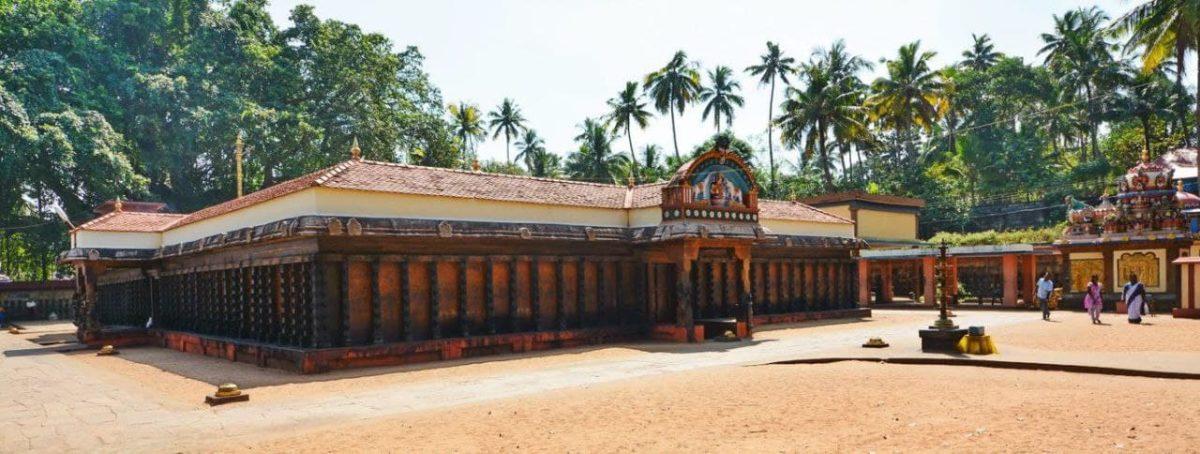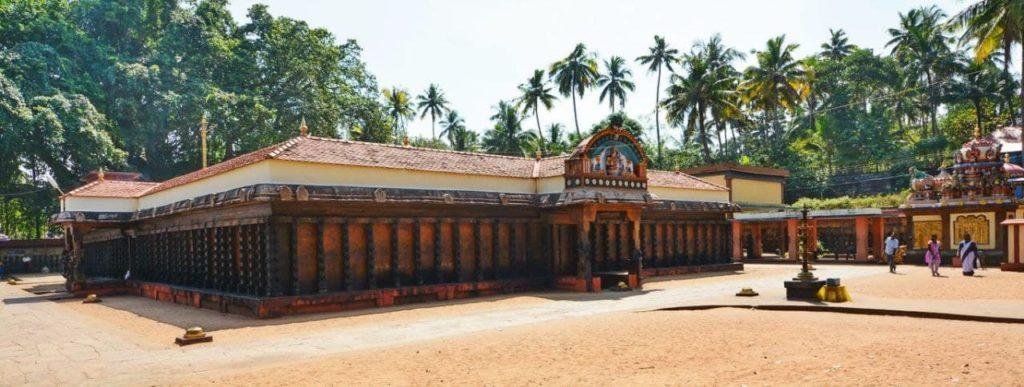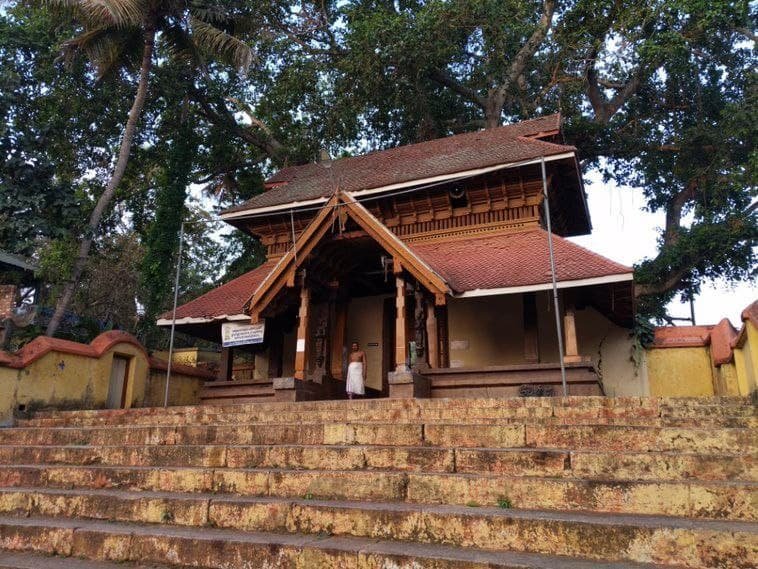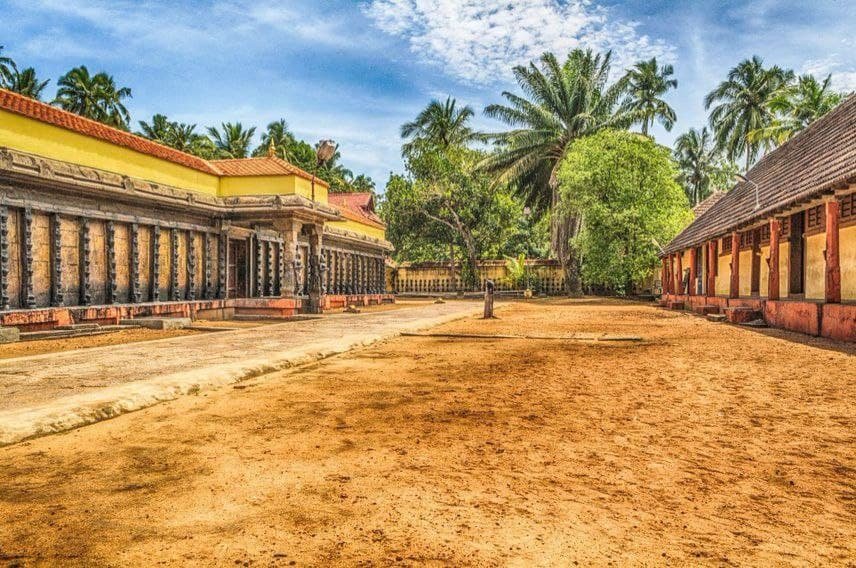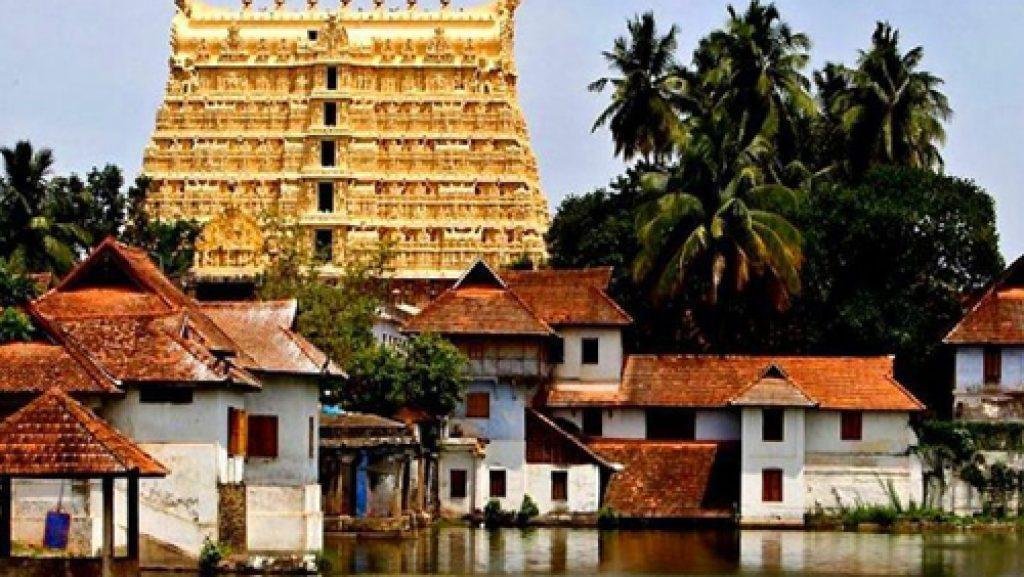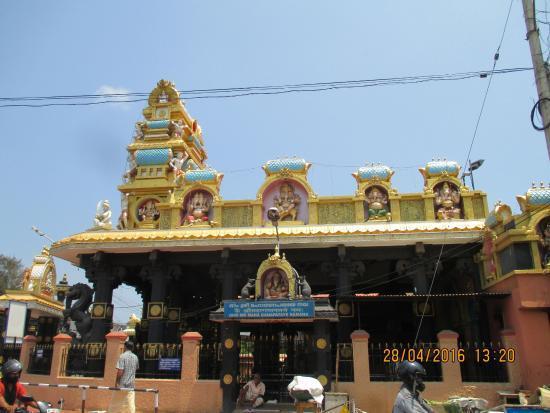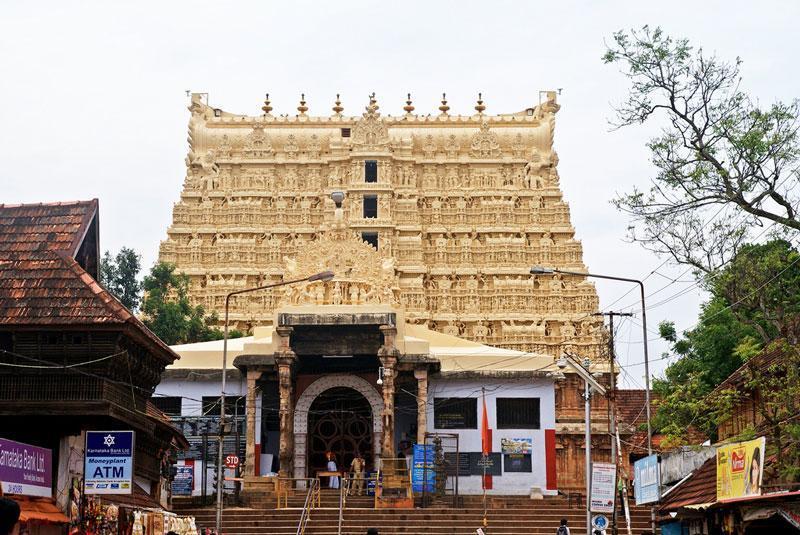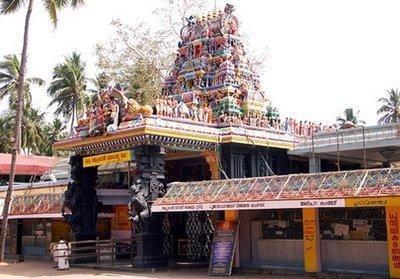Contents
Janardana Swami Temple is a 2000-year-old temple situated in the municipality of Varkala city. It is also known as Varkala Temple. Janardana Swami is a form of Lord Vishnu. It is referred to as Dakshin Kashi (Benares of the south).
This is the only temple of Lord Vishnu in the Achamanam form. This beautiful temple is located at the shores of the Arabian sea. According to the scriptures, when the Deity’s hand touches its mouth, that would mark the end of Kaliyuga.
The temple has an ancient bell removed from a shipwreck, donated by the captain of the Dutch vessel which sank near Varkala without causing any casualties.
Sri Balarama visited this place during His Dravida Desha Yatra.
The Deity
The presiding deity of this temple is Sri Janarthana Swami. The deity is found in a standing position facing towards the east. His right hand is in position as if he is performing “Aachamanam”. His right hand is raised towards his mouth and legends say that if his hand goes nearer to his mouth, the world will come to an end. It is believed to happen at the end of the Kali Yuga.
Geological Formation
To the scientist, Varkala is well known for its geological formation and has been inspected and examined carefully by hordes or geologists, and volumes of interesting literature are carefully preserved in the archives of the Government of India. Besides the enchanting sea-view, there is the backwater journey by canal hewn out of the tremendous heights of hills on either side of it. The vegetation on either side of the canal, rising in height is a magnificent sight, has given rise to a series of springs form which gushes out sparkling water throughout the year. The water is supported to have medicinal properties which cure certain ailments. Even a single bath is a tonic that no traveler or visitor should miss
The Temple Architecture
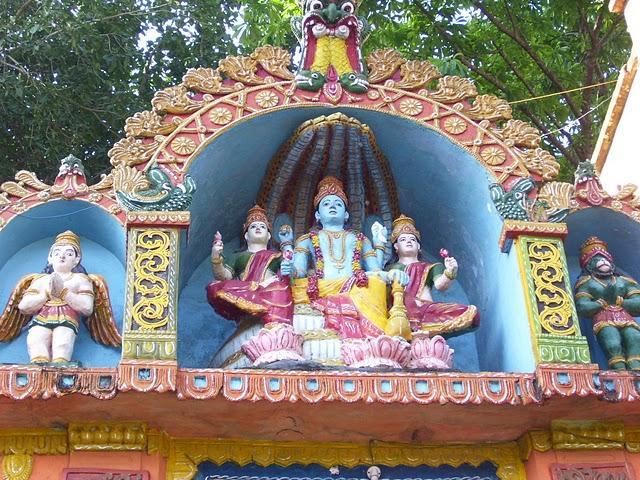
The temple of Sri Janardana is situated on the summit of a tableland adjoining the sea. It is located on one of the hill-tops, which is reached by a long and wearisome flight of steps and one feels tired on arriving at the feet of the Lord. At the entrance to the inner shrine are the idols of Hanuman and Garuda on either side and in the main shrine is the idol of Sri. Janardana with Sri Devi and Bhoo Devi. The temple of Janardana is a fine example of Kerala art and architecture. The circular ‘Sanctum sanctorum” surmounted by a conical dome of copper sheets, the square ‘mandapa’ with beautiful wooden carvings of Navagrahas on the ceiling and copper-plated roof over it, the quadrangular enclosures (prakara) around them, a hall containing a ‘bali peetha’ in front of the inner temple are the characteristic features of Kerala style of architecture. The construction period of this temple saw the rise of a highly embellished temple. one of the inscriptions indicates that the temple was improved during the reign of Umayamma Rani, who ruled this region during 1677-84 A.D. The main idol has a striking appearance with four arms having all the attributes of Vishnu. In the southwestern corner and on the north-eastern side of the outer enclosure are the shrines of Sasta and Shiva with Nandi.
Local Legends
Sage Narada, after paying his respects to Lord Narayana, left Vaikuntam to see Brahma. Enraptured by the sweet music of Narada, Narayana followed him unobserved. When Narada reached Brahmaloka, Brahma saw Narayana following his son Narada and offered salutations to him, at which Vishnu, realizing the awkward situation, suddenly disappeared. Brahma found that the person whom he had revered was his own son, Narada. The ‘Prajapathis’ who were laughing at this incident were cursed by Brahma that they would be born on earth and suffer the miseries of human beings. Narada advised them to perform penance at the place he himself would select for them. Narada threw his ‘Valkalam’ (bark upper garment) into the air and at the place where it fell down, they consecrated a temple for Janardanaswamy (a name of Vishnu). Hence the name Varkala is a corruption of ‘Valkala’, but the name came into prominent usage.
According to the legend, attracted by the music from Narada’s Veena, Lord Vishnu started following him and reached Satyaloka. Seeing Lord Vishnu, Brahma prostrated before him. Lord Vishnu soon realized that he has reached Satyaloka but did not realize that Lord Brahma is prostrating before him and left back to Vaikunta. It seemed as if Lord Brahma is falling towards the feet of Narada and all the present ‘Devas’ laughed. This made Brahma angry and he cursed Devas to be born as humans in the earth. Devas repented their folly and begged to be forgiven. Brahma replied that the curse would be withdrawn when they do a penance to please Lord Janardana. Devas asked where that place is where they should do the penance. Brahma told them that the place where Sage Narada’s ‘Vastra’ falls will be the sacred place. It is Varkala where his ‘Vastra’ fell and Devas did the penance accordingly to get relieved of the curse.
According to Mahabharata, Balabhadran has visited the place for pilgrimage.
Photo Gallery
How to Reach
Varkala Town is located 40 kilometers north of Trivandrum, which is the capital and metropolitan city of Kerala and 28 km south of the port city of Kollam.
Trivandrum International Airport (52 km) is the nearest airport and there is a helipad at Varkala Cliff.
Varkala Railway Station, the second busiest and third-highest revenue-generating station in Trivandrum district is connected by regular trains from Trivandrum Central and major cities in India like Mumbai, Delhi, Bangalore, Chennai, Hyderabad, Goa, Kolkata, etc.
Varkala is situated along the Trivandrum – Kollam coastal highway and 9 km east of National Highway 66. Private buses and KSRTC buses run along NH 66 and through Varkala. State Highway 64 (Kerala) starts in Varkala and ends in Madathara connects major places in the east. The highway is 45 km long.
Varkala is connected to National Waterway 3 through Varkala Tunnel, which passes through the heart of the city.
Contact Details
Temples in Thiruvananthapuram
Sree Padmanabha Swamy Temple, Thiruananthapuram
The origin of the Temple of Sree Padmanabhaswamy is lost in antiquity. It is not possible to determine with any exactitude, from any reliable historical documents or other sources as to when and by whom the original idol of Sree Padmanabhaswamy was consecrated. The Temple has references in Epics and Puranas. Srimad Bhagavatha says that…
Pazhavangadi Ganapathy Temple, Thiruvananthapuram, Kerala
Pazhavangadi Ganapathy Temple, Thiruvananthapuram, Kerala Date built: – Deity: – Architectural style: – Major festivals Thiruvonam, Vijayadashami, Vishu, Vinayaka Chathurthi Locale: Thiruvananthapuram District:: Thiruvananthapuram Address: Padmavilasam Rd, Pazhavangadi, Padma Nagar, Pazhavangadi, Thiruvananthapuram, Kerala 695023 Phone 04712461929 The Pazhavangadi Maha Ganapathy temple(Malayalam: ശ്രീ പഴവങ്ങാടി മഹാ ഗണപതി ക്ഷേത്രം) is situated at East Fort in the heart of Thiruvananthapuram City. The main Deity of the temple is Sri…
Padmanabhaswamy Temple, Thiruvananthapuram, Kerala
Padmanabhaswamy Temple, Thiruvananthapuram, Kerala Date built: – – Architectural style: Dravidian architecture, Architecture of Kerala Major festivals – Locale: Thiruvananthapuram District:: Thiruvananthapuram Address: West Nada, Fort, East Fort, Pazhavangadi, Thiruvananthapuram, Kerala 695023 Phone 04712464606 Padmanabhaswamy Temple is located in Thiruvananthapuram, Kerala, India. The temple is built in an intricate fusion of the indigenous Kerala style and the Tamil style (kovil) of architecture associated…
Attukal Temple, Thiruvananthapuram, Kerala
Attukal Temple, Thiruvananthapuram, Kerala Date built: – Deity: – Architectural style: – Major festivals – Locale: Attukal District:: Thiruvananthapuram Address: Manacaud P.O, Attukal – Chiramukku Rd, Thiruvananthapuram, Kerala 695009 Phone 04712463130 The Attukal Bhagavathy Temple is a Hindu religious shrine at Attukal, Trivandrum in Kerala, India. Goddess Bhadrakali (Kannaki), mounted over ‘vethala’, is the main deity in this temple. Bhadrakali, a form of Mahakali, who…

